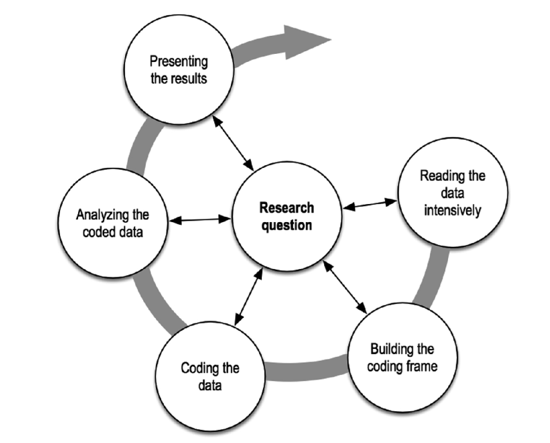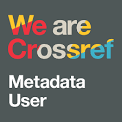Branding Image of Higher Education Quality Based on Islamic Boarding Schools
DOI:
https://doi.org/10.51574/ijrer.v4i3.3076Keywords:
Branding Image, Higher Education Quality, Islamic Boarding School, Islamic UniversityAbstract
This study aims to describe the branding image development strategy of Islamic boarding school-based higher education. The study elevates the branding "Khairu Ummah Rahmatal Lil'alamin" as an institutional identity that combines academic excellence and Islamic values. This study uses a qualitative approach with a content analysis method. This research was conducted at Zainul Hasan Genggong Islamic University. Data were collected through in-depth interviews, observations, and documentation, then analyzed using Miles and Huberman's interactive analysis techniques. The results of the study indicate that the branding strategy is carried out through strengthening religious values, improving the quality of academic services, and optimizing digital and traditional promotional media. The main supporting factors are the strong commitment of campus managers and the involvement of the academic community, while the main challenges come from competition between universities and changes in community preferences. This study recommends the need for continuous innovation to maintain the relevance of branding amidst the development of the times.
References
Aishah, A., & Nurdin, D. (2022). Transformational Leadership of Islamic Boarding School Leaders Into Modern Islamic context in diverse Discursive. EARR (Educational Administration Research and Review), 6(2). https://doi.org/10.17509/earr.v6i1.47535
Al-Asy’ari, A. H. (2024). Peran pendidikan akhlak dalam membangun karakter mahasiswa di STMIK Triguna Dharma Medan. Jurnal Ilmiah Al-Hadi, 9(2), 35-42. https://doi.org/10.54248/alhadi.v11i1.4789
Al-Fatih, S. (2024). Muhammadiyah's Untold Story; A Welfare State Vision Through Higher Education System. Jurnal Muhammadiyah Studies, 9(2), 120-129. https://doi.org/10.22219/jms.v9i2.38507
Apriyanto, N., & Hidayati, D. (2022). Student integrative Islamic boarding school education management model. International Journal of Educational Management and Innovation, 3(2), 210-224. https://doi.org/10.12928/ijemi.v3i2.5804
Aspara, J., Aula, H. M., Tienari, J., & Tikkanen, H. (2014). Struggles in organizational attempts to adopt new branding logics: The case of a marketizing university. Consumption markets & culture, 17(6), 522-552. https://doi.org/10.1080/10253866.2013.876347
Baharun, H., Wibowo, A., Mulyani, H., & Maula, R. (2021). Quality Service in Improving The Profitability of Educational Institutions Based on Pesantren. Jurnal Isema: Islamic Educational Management, 6(2), 171-186. https://doi.org/10.15575/isema.v6i2.15580
Chanifah, N., Hanafi, Y., Mahfud, C., & Samsudin, A. (2021). Designing a spirituality-based Islamic education framework for young muslim generations: a case study from two Indonesian universities. Higher Education Pedagogies, 6(1), 195-211. https://doi.org/10.1080/23752696.2021.1960879
Farkas, X., & Bene, M. (2021). Images, politicians, and social media: Patterns and effects of politicians’ image-based political communication strategies on social media. The international journal of press/politics, 26(1), 119-142. https://doi.org/10.1177/1940161220959553
Ghorbanzadeh, D., & Sharbatiyan, M. (2024). The role of website features in creating value co-creation behaviors and enhancing the brand image and reputation of higher education institutions. Interactive Technology and smart education, 21(1), 21-43. https://doi.org/10.1108/ITSE-12-2021-0225
Kardi, K., Basri, H., Suhartini, A., & Meliani, F. (2023). Challenges of online boarding schools in the digital era. At-Tadzkir: Islamic Education Journal, 2(1), 37-51. http://at-tadzkir.pdtii.org/index.php/tadzkir/article/view/11
Kyngäs, H. (2019). Qualitative research and content analysis. In The application of content analysis in nursing science research (pp. 3-11). Cham: Springer International Publishing. https://doi.org/10.1007/978-3-030-30199-6_1
Manzoor, S. R., Ho, J. S. Y., & Al Mahmud, A. (2021). Revisiting the ‘university image model’for higher education institutions’ sustainability. Journal of Marketing for Higher Education, 31(2), 220-239. https://doi.org/10.1080/08841241.2020.1781736
Mohamed Hashim, M. A., Tlemsani, I., & Matthews, R. (2022). Higher education strategy in digital transformation. Education and Information Technologies, 27(3), 3171-3195. https://doi.org/10.1007/s10639-021-10739-1
Muhammad, F., Abitolkha, A. M., & Dodi, L. (2024). Dimensions of Sufism within the Islamic religious education curriculum in higher education. Nazhruna: Jurnal Pendidikan Islam, 7(1), 40-58. https://doi.org/10.31538/nzh.v7i1.4525
Muhith, A., Dwiyono, Y., Munawati, S., Mustofa, A., & Haryanto, S. (2023). Challenges of islamic boarding school organizational culture in the millennial generation and the digital era 4.0. Nazhruna: Jurnal Pendidikan Islam, 6(3), 457-474. https://doi.org/10.31538/nzh.v6i3.4231
Munawwaroh, Z., & Rahayu, P. (2024). Digital Marketing Strategies for Enhancing Branding in Islamic Boarding Schools: A Comprehensive Analysis. Tarbawi: Jurnal Keilmuan Manajemen Pendidikan, 10(02), 199-208. https://doi.org/10.32678/tarbawi.v10i02.10005
Mustofa, M. Y., Mas' ud, A., & Elizabeth, M. Z. (2023). Hybrid Pesantren in Indonesia; Analyzing the Transformation of Islamic Religious Education in the Digital Age. Al-Tadzkiyyah: Jurnal Pendidikan Islam, 14(1), 79-104. https://doi.org/10.24042/atjpi.v14i1.16928
Panda, S., Pandey, S. C., Bennett, A., & Tian, X. (2019). University brand image as competitive advantage: a two-country study. International Journal of Educational Management, 33(2), 234-251. https://doi.org/10.1108/IJEM-12-2017-0374
Riyadi, S., Darwis, M., Judijanto, L., Nicolas, D. G., & Saefudin, A. (2023). Effective Promotion Strategy of Integrated Islamic Education Institutions in Modern Society. QALAMUNA: Jurnal Pendidikan, Sosial, dan Agama, 15(1), 667-676. https://doi.org/10.37680/qalamuna.v15i1.4192
Rizqon, A., & Fimaisarah, A. (2024). Digital Revolution in Islamic Education: Building the Branding of Religious Schools in Rural Indonesia through Innovative Digital Marketing Strategies. JUMPA: Jurnal Manajemen Pendidikan, 5(2), 111-123. https://doi.org/10.33650/jumpa.v5i2.7348
Rohman, A., Muhtamiroh, S., Imron, A., & Miyono, N. (2023). Integrating traditional-modern education in madrasa to promote competitive graduates in the globalization era. Cogent Education, 10(2), 2268456. https://doi.org/10.1080/2331186X.2023.2268456
Sahin, A. (2018). Critical issues in Islamic education studies: Rethinking Islamic and Western liberal secular values of education. Religions, 9(11), 335. https://doi.org/10.3390/rel9110335
Schildermans, H., & Tröhler, D. (2024). The future of higher education and the claim of globalisation: revisioning the past, re-imagining the future. Globalisation, Societies and Education, 1-13. https://doi.org/10.1080/14767724.2024.2399649
Solahudin, D., & Fakhruroji, M. (2019). Internet and Islamic learning practices in Indonesia: Social media, religious populism, and religious authority. Religions, 11(1), 19. https://doi.org/10.3390/rel11010019
Steiner, K. (2018). Branding Islam: Islam, Law, and Bureaucracies in Southeast Asia. Journal of Current Southeast Asian Affairs, 37(1), 27-56. https://doi.org/10.1177/186810341803700102

Downloads
Published
How to Cite
Issue
Section
License
Copyright (c) 2025 Muhimmatul Khoiroh, Abd. Aziz, Nur Fatimah

This work is licensed under a Creative Commons Attribution-ShareAlike 4.0 International License.









1.png)













